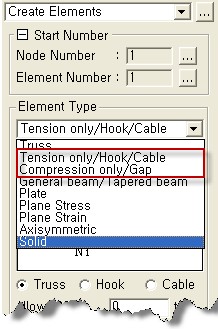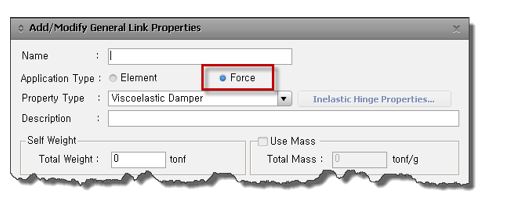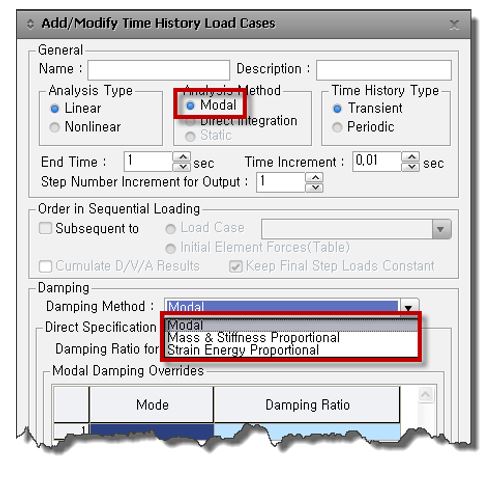[ANALYSIS] What kind of boundary conditions & elements are available in response spectrum, and time history analysis?
Elements and boundary conditions used when performing an Eigen analysis,
response spectrum analysis, or a time history analysis can be summarized as follows.
1. Eigen Value Analysis / Response Spectrum Analysis
1) Element: Tension only / Hook / Cable, Compression only / Gap elements are replaced with Truss
2) Boundary conditions: General Link such as Tension only / Compression only
Elastic Link are replaced with General Type of Elastic Link

2. Linear time history analysis
1) Element: Same as Eigen analysis / response spectrum analysis
2) Boundary conditions: Force Type and Tension only / Compression only Elastic Link of
General Link are replaced with General Type of Elastic Link

3. Non-linear time history analysis
1) Element: Same as Eigen analysis / response spectrum analysis
2) Boundary conditions: Tension only / Compression only Elastic Link is replaced with
General Type of Elastic Link
Note relationships with eigenvalue analysis and time history analysis can be summarized as follows:
- If you choose Time history analysis method as Modal (mode superposition method),
you must first perform the eigenvalue analysis.
- If the Damping Method for Time History Analysis is Modal or Strain Energy Proportional, you must previously perform the eigenvalues analysis.

response spectrum analysis, or a time history analysis can be summarized as follows.
1. Eigen Value Analysis / Response Spectrum Analysis
1) Element: Tension only / Hook / Cable, Compression only / Gap elements are replaced with Truss
2) Boundary conditions: General Link such as Tension only / Compression only
Elastic Link are replaced with General Type of Elastic Link
2. Linear time history analysis
1) Element: Same as Eigen analysis / response spectrum analysis
2) Boundary conditions: Force Type and Tension only / Compression only Elastic Link of
General Link are replaced with General Type of Elastic Link
3. Non-linear time history analysis
1) Element: Same as Eigen analysis / response spectrum analysis
2) Boundary conditions: Tension only / Compression only Elastic Link is replaced with
General Type of Elastic Link
Note relationships with eigenvalue analysis and time history analysis can be summarized as follows:
- If you choose Time history analysis method as Modal (mode superposition method),
you must first perform the eigenvalue analysis.
- If the Damping Method for Time History Analysis is Modal or Strain Energy Proportional, you must previously perform the eigenvalues analysis.
| Files | ||
|---|---|---|

|
||

|
||

|
||
|
|

